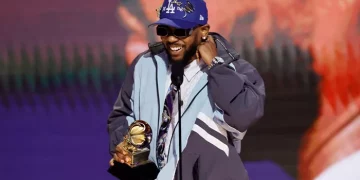Freestyle music, a vibrant and energetic genre, emerged in the early 1980s, primarily within the Hispanic and Italian-American communities of New York City. This unique sound combines elements of electronic dance music, pop, and Latin rhythms, creating an infectious beat that captivated audiences. Freestyle music is characterized by its heartfelt lyrics often centered on themes of love and heartbreak, resonating deeply with listeners. This article explores the origins of freestyle music, detailing its cultural significance and the factors that contributed to its rise.
The Birthplace of Freestyle Music
Freestyle music originated in the late 1970s and early 1980s, with its roots traced back to various musical influences prevalent in urban New York. The genre developed primarily in areas such as Upper Manhattan, The Bronx, Brooklyn, and later expanded to Miami. It was a response to the changing musical landscape as disco’s popularity began to wane.
Key Influences
Disco: The pulsating beats and catchy melodies of disco laid the groundwork for freestyle music. As disco faded from mainstream radio, it left a void that freestyle sought to fill.
Electro: The synthetic instrumentation and syncopated percussion typical of electro music were integral to freestyle’s sound. Tracks like Afrika Bambaataa’s “Planet Rock” (1982) exemplified this fusion of styles.
Hip-Hop: The emerging hip-hop scene also influenced freestyle music, particularly through sampling techniques and rhythmic vocal styles.
Cultural Context
Freestyle music emerged during a time when many clubs catering to Hispanic and Italian-American audiences were closing due to changes in musical tastes and economic pressures. The disenfranchised communities turned to freestyle as a new form of expression that reflected their experiences and emotions.
Characteristics of Freestyle Music
Freestyle music is defined by several key characteristics that distinguish it from other genres:
Upbeat Rhythms: Freestyle features lively tempos that encourage dancing, making it a staple in clubs.
Synthetic Sounds: The use of synthesizers and drum machines creates a distinct electronic sound.
Emotional Lyrics: Many freestyle songs explore themes of love, heartbreak, and personal struggles, often delivered with passionate vocal performances.
Notable Artists And Tracks
Several artists played pivotal roles in popularizing freestyle music during its peak in the late 1980s and early 1990s:
Shannon: Often credited with releasing the first freestyle hit, “Let the Music Play” (1983), which became an anthem for the genre.
Afrika Bambaataa: His track “Planet Rock” is considered a foundational piece for freestyle music, influencing countless artists.
TKA: Known as the “Kings of Freestyle,” TKA produced several hits that defined the genre’s sound.
The Rise of Freestyle Music
Initial Popularity
Freestyle music gained traction in New York City clubs where DJs began spinning tracks that blended electronic sounds with Latin rhythms. The genre quickly spread to other cities like Philadelphia and Miami, where it found enthusiastic audiences.
Radio Airplay
By the mid-1980s, freestyle began receiving significant radio play, further solidifying its place in popular culture. Stations catered specifically to these communities helped promote freestyle artists and their music.
Cultural Events
The genre’s popularity was also bolstered by live events and concerts featuring top freestyle artists. These gatherings fostered a sense of community among fans and showcased the vibrant culture surrounding freestyle music.
Decline and Legacy
Despite its initial success, freestyle music began to decline in popularity by the late 1990s as house music emerged as a dominant force in dance clubs. However, its legacy continues:
Niche Markets: Freestyle remains popular in niche markets across Brazil, Germany, and Canada.
Influence on Other Genres: Elements of freestyle can be heard in contemporary electronic dance music (EDM) and pop tracks.
Revival Efforts: Recent years have seen efforts to revive interest in freestyle through festivals and reunions featuring classic artists.
Conclusion
Freestyle music originated from a rich tapestry of cultural influences within urban communities in New York City during the early 1980s. Its unique blend of electronic sounds, heartfelt lyrics, and vibrant rhythms created a genre that resonated deeply with audiences. While its mainstream popularity may have waned over time, freestyle continues to influence contemporary music and remains cherished by fans around the world. The story of freestyle is not just about a musical style; it is also about cultural identity, community resilience, and the power of expression through art.
Related topics:



























